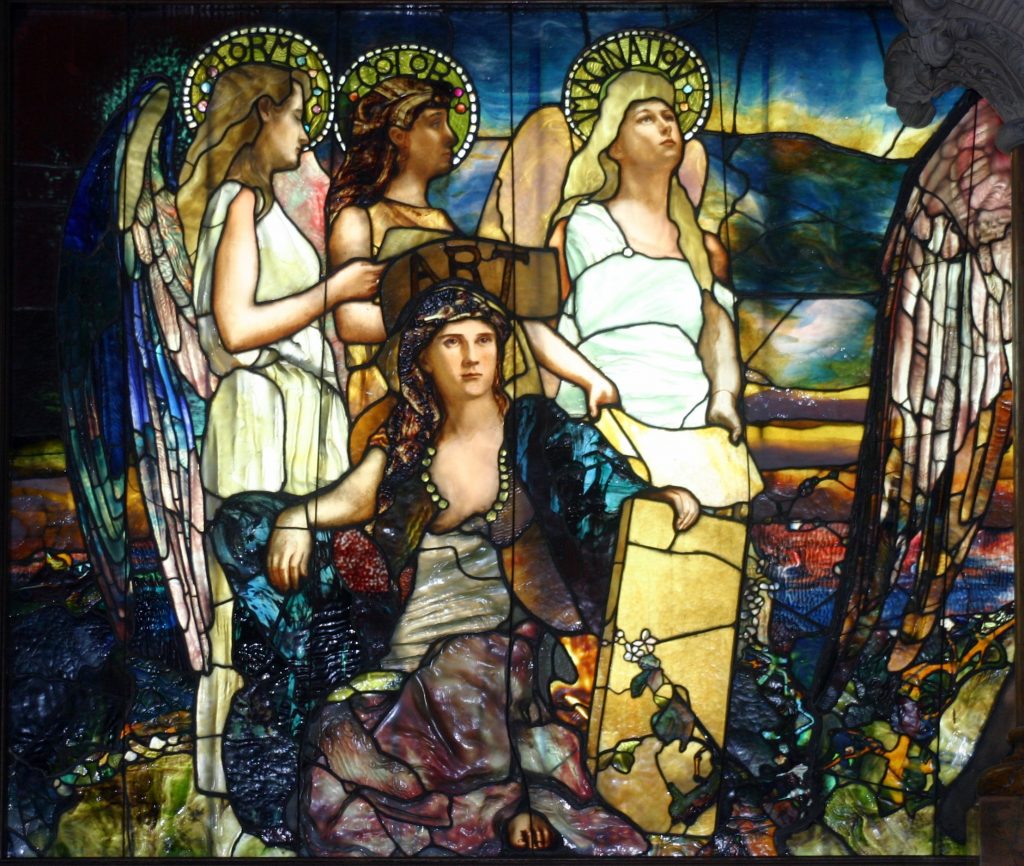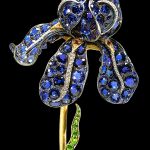
Louis Comfort Tiffany’s stained glass pieces are among the most beloved and visually captivating artworks of the late 19th and early 20th centuries. Known for their luminous colors, intricate designs, and masterful craftsmanship, Tiffany’s stained glass continues to enchant art lovers and collectors alike. Through his innovative techniques and devotion to nature-inspired aesthetics, Tiffany redefined stained glass and left an indelible mark on the decorative arts. This article explores the key elements that make Tiffany’s stained glass so beautiful, his pioneering methods, and the lasting legacy of his artistry.
Tiffany’s Groundbreaking Glass Techniques
One of the most defining aspects of Tiffany stained glass art was his use of innovative glassmaking techniques. Among these, Favrile glass stands out as his signature creation, patented in 1894. Unlike traditional stained glass, where color was often applied on the surface, Favrile glass had colors embedded directly into the glass. This allowed Tiffany to achieve iridescent hues that changed with light, creating a dynamic and shifting palette. The term “Favrile,” derived from the Old English word for “handmade,” underscored Tiffany’s dedication to artistry and craftsmanship.
In addition to Favrile glass, Tiffany also pioneered the use of opalescent glass, a style that incorporated various colors within a single piece. Opalescent glass allowed for richer, more nuanced effects, with swirls of color that emulated the natural tones found in minerals, seashells, and precious stones. By layering glass of different colors and textures, Tiffany achieved depth and realism that set his work apart from other stained glass of his era.
Inspiration from Nature: Bringing the Outdoors In
Louis Comfort Tiffany’s work is widely celebrated for its close connection to the natural world. His stained glass designs frequently depicted flowers, vines, trees, birds, and insects, echoing the beauty of nature. This thematic choice was aligned with the Art Nouveau movement, a style that Tiffany embraced fully, which prioritized organic, flowing forms over rigid lines. By depicting natural elements, Tiffany aimed to bring the serenity and vibrancy of the outdoors into interior spaces.
Some of his most iconic pieces, like the “Wisteria” and “Dragonfly” lamps, exemplify this approach. The “Wisteria” lamp, with its cascading blossoms, captures the delicate yet vibrant look of the flowering vine, while the “Dragonfly” lamp showcases intricate insect motifs, rendered in astonishing detail. These designs were not merely decorative; they reflected Tiffany’s belief in the beauty and restorative power of nature, a sentiment that resonated deeply with his audiences.
Rich Color Layering and Light Interaction
A striking aspect of Tiffany stained glass is its vibrant and layered color palette. Tiffany achieved this depth of color not by painting on the glass but by layering different types and colors of glass. This technique, known as plating, allowed him to create complex color gradations and shadows, which lent a painterly quality to his pieces.
The interplay between color and light in Tiffany’s glasswork creates a unique, dynamic experience. Depending on the light source and time of day, his stained glass pieces can look vastly different, with colors and details changing in subtle ways. This ability to harness natural light to enhance the beauty of his work added a magical quality, transforming each piece into a living artwork. Viewers find themselves drawn in by the depth and shifting tones, which keep Tiffany’s work feeling fresh and alive, even over a century after it was created.
Attention to Detail and Masterful Craftsmanship
Tiffany’s dedication to detail and craftsmanship was evident in every piece that left his studio. His stained glass windows and lamps were meticulously planned and assembled, often requiring hundreds, if not thousands, of individual glass pieces. Each piece was carefully cut, shaped, and selected to fit precisely within the overall design, creating a harmonious, cohesive composition.
The level of skill and patience required for such craftsmanship was extraordinary. Tiffany worked with a team of highly skilled artisans who helped him execute his complex designs. His studio, known as Tiffany Studios, became a center of artistic innovation, where each piece was treated as a work of art rather than a mere product. This commitment to quality and detail contributed significantly to the beauty and durability of his stained glass, making it highly sought after and widely admired.
Emotional and Spiritual Depth in Religious Commissions
Tiffany’s stained glass also held a profound emotional and spiritual appeal, particularly in his religious commissions. Many churches, chapels, and cathedrals commissioned Tiffany to create windows that would enhance the spiritual atmosphere of their spaces. Through his mastery of light, color, and form, Tiffany was able to convey themes of hope, redemption, and peace, resonating with the spiritual themes central to these settings.
One example of his impactful religious work is the “Angel of the Resurrection” window, installed at the First Presbyterian Church in Indianapolis. This window, depicting a radiant angel, exemplifies Tiffany’s ability to use light and color to evoke a sense of reverence and transcendence. The iridescent hues and carefully chosen colors draw viewers into a contemplative state, enhancing the window’s spiritual significance. Tiffany’s stained glass windows became more than mere decorations; they were transformative pieces that elevated the ambiance of religious spaces.
Influence of the Art Nouveau Movement
Tiffany’s work was deeply influenced by the Art Nouveau movement, which celebrated natural forms and elegant, flowing lines. As one of the movement’s leading figures in the United States, Tiffany embraced Art Nouveau’s focus on craftsmanship and design unity, making each piece of stained glass both functional and artistically meaningful. Art Nouveau sought to break down the barriers between “fine” and “decorative” arts, and Tiffany’s glasswork embodied this ideal, bridging art and everyday life.
The Art Nouveau influence is evident in Tiffany’s organic designs, with their graceful curves and asymmetrical forms that mimic the natural world. Tiffany’s stained glass lamps and windows were not just decorative items; they were statements of the Art Nouveau philosophy, advocating for beauty and artistry in everyday objects. This influence contributed significantly to the appeal and distinctiveness of Tiffany’s work, aligning it with a broader artistic movement that valued nature, craftsmanship, and innovation.
Collaborative Studio Practice and Artisanal Innovation
Tiffany Studios was a hub of creativity and collaboration, bringing together skilled artisans, designers, and craftspeople to produce Tiffany’s ambitious designs. Tiffany encouraged innovation and experimentation, allowing his artisans to explore new forms and techniques within the supportive environment of his studio. This collaborative atmosphere fostered creativity and allowed Tiffany’s vision to flourish on a larger scale.
Tiffany’s reliance on a team approach was unique at the time and allowed him to produce a wide variety of stained glass works, from large windows to intricate lamps. His artisans contributed to the development of distinctive styles and motifs, including the famous “Tiffany lamps.” This collective effort not only expanded Tiffany’s output but also enriched the aesthetic quality of his work, as each piece benefitted from the diverse skills and ideas of his team.
The Enduring Legacy of Louis Comfort Tiffany’s Stained Glass
The beauty of Tiffany’s stained glass has stood the test of time, and his works are celebrated in museums, churches, and private collections worldwide. His pieces are prized not only for their aesthetic appeal but also for their historical significance, representing a pivotal moment in American decorative arts. Tiffany’s commitment to innovation, artistry, and nature-inspired design has inspired generations of artists and continues to captivate audiences today.
Collectors and art lovers regard Tiffany’s stained glass as masterpieces of color, light, and craftsmanship. Institutions like the Metropolitan Museum of Art and the Charles Hosmer Morse Museum of American Art house significant collections of his work, allowing the public to experience the magic of Tiffany’s artistry. His legacy lives on as a testament to the power of creativity and the timeless allure of beauty crafted by hand.
Key Takeaways
- Innovative Techniques: Tiffany’s use of Favrile and opalescent glass set his work apart, creating rich colors that were integral to the glass.
- Nature Themes: His designs often depicted flowers, animals, and landscapes, drawing inspiration from the beauty of the natural world.
- Craftsmanship: Tiffany’s pieces involved meticulous planning and assembly, resulting in highly detailed, harmonious compositions.
- Spiritual Resonance: Many of Tiffany’s stained glass works were created for religious spaces, enhancing their emotional and spiritual appeal.
- Art Nouveau Influence: Tiffany embraced the Art Nouveau style, creating organic, flowing designs that celebrated natural beauty and artistic craftsmanship.
FAQs
- What is Favrile glass?
Favrile glass is a type of iridescent glass that Tiffany patented in 1894, with colors embedded within the glass, not applied on its surface. - How did Tiffany achieve the vibrant colors in his work?
Tiffany used layered and multicolored glass to achieve depth, making each piece appear different depending on the light. - What are some iconic Tiffany stained glass designs?
Famous designs include the “Wisteria” and “Dragonfly” lamps and religious works like “Angel of the Resurrection.” - Why was nature a recurring theme in Tiffany’s work?
Tiffany found inspiration in nature’s beauty, a theme that resonated with the Art Nouveau movement, focusing on organic, flowing designs.




